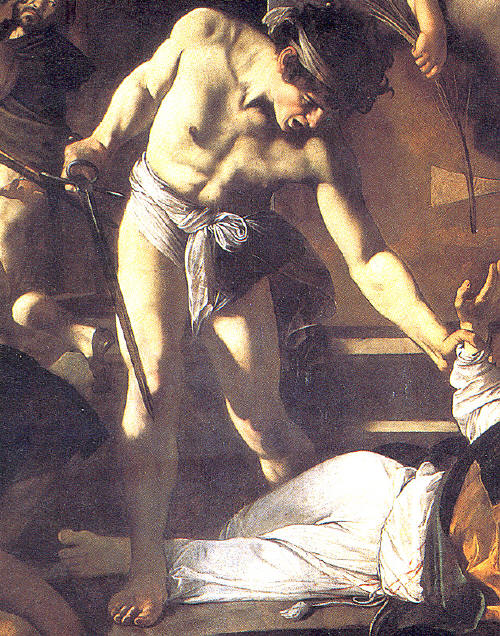St. Matthew's Executioner (Detail), Caravaggio, Martyrdom of Saint Matthew (Detail) 1599-1600, San Luigi dei Francesi, Rome
On the origins of the maxim "ne crimina remaneant impunita" see K. Pennington, "Innocent III and the Ius commune," Grundlagen des Rechts: Festschrift für Peter Landau zum 65. Geburtstag, herausgegeben von Richard Helmholz, Paul Mikat, Jörg Müller, Michael Stolleis (Rechts- und Staatswissenschaftliche Veröffentlichungen der Görres-Gesellschaft, NF 91; Paderborn: Verlag Ferdinand Schöningh, 2000) 352-354
Publica et communis utilitas
